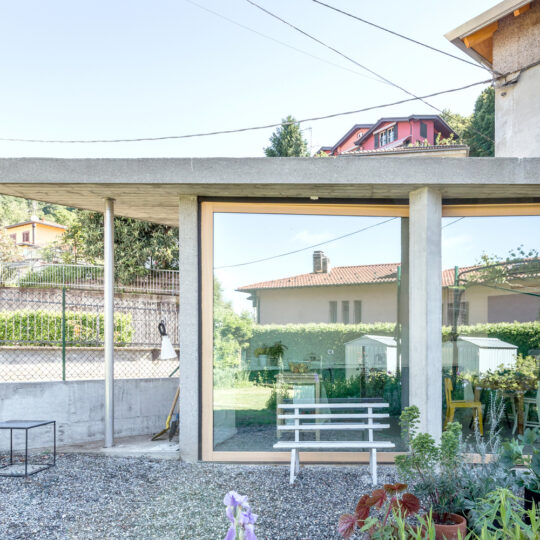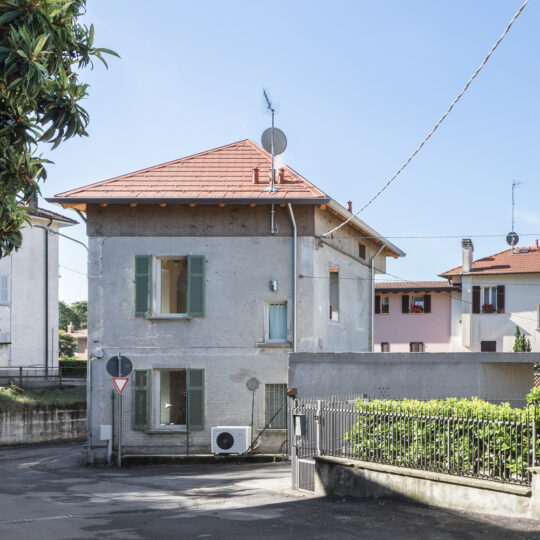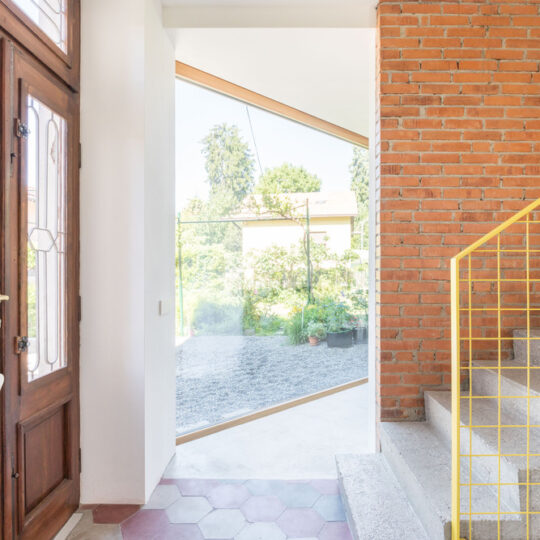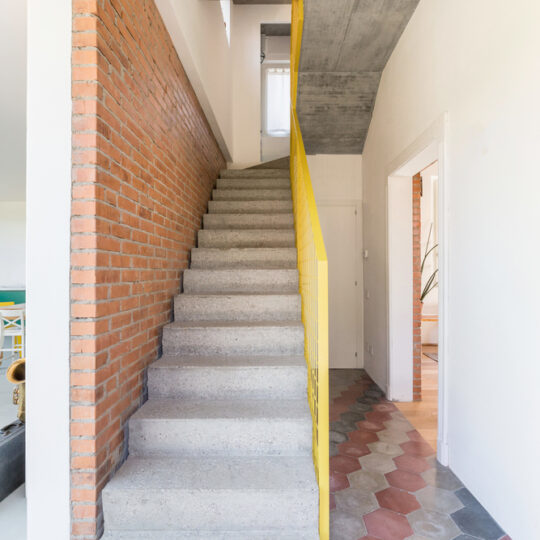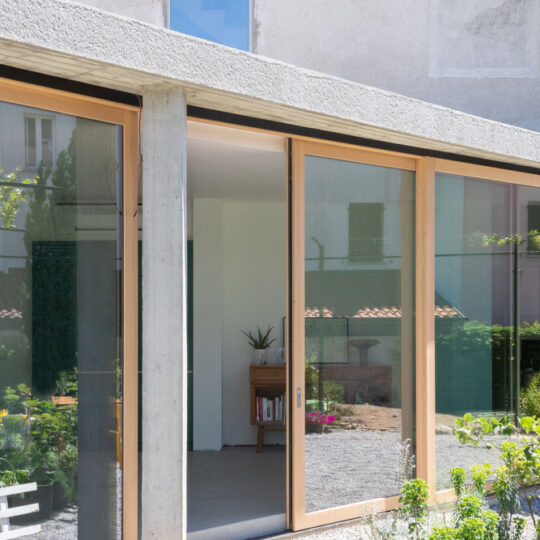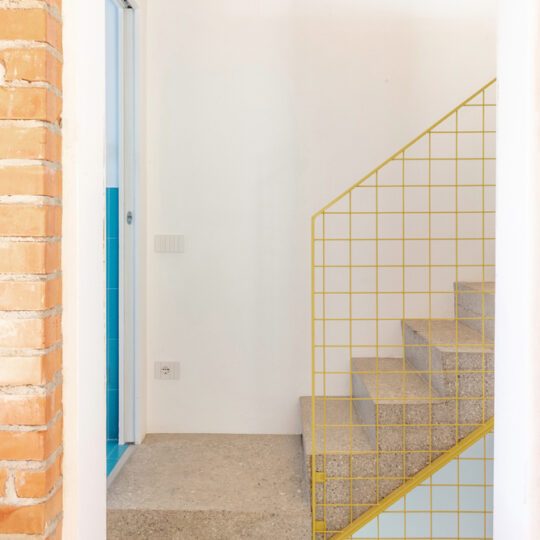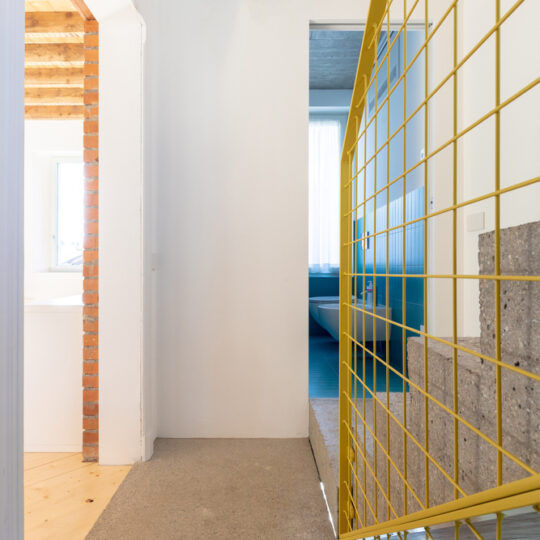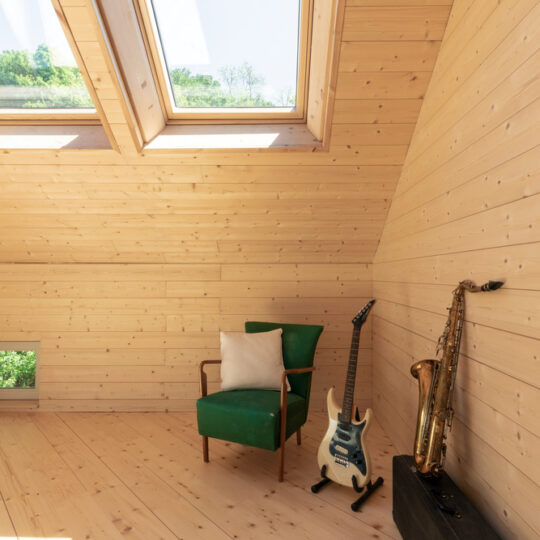In Albate (Italy), OASI architects designed an extention of a small rural house apparently isolated from the wealthy and informal garden.
The new triangular extension in concrete conquers the relationship with the garden and the diagonal introduced by the triangle generates a unique relationship with the garden that other shapes would not have guaranteed.
The roof pyramid defines a new living space in wood: it is created by raising the ridge and changing the slope of the pitches, while the proportions of the house are preserved in this way.
The plasters of the small rural house define unique and handcrafted grains and textures, so the new surfaces introduced such as the hammered concrete of the triangle and the exposed cork of the thermal envelope of the attic try to find a material relationship with the original grains of the house.
The final intent for this Albate House project is to define a homogeneous and amalgamated built landscape, with a dynamic and unpredictable spatial relationship.


